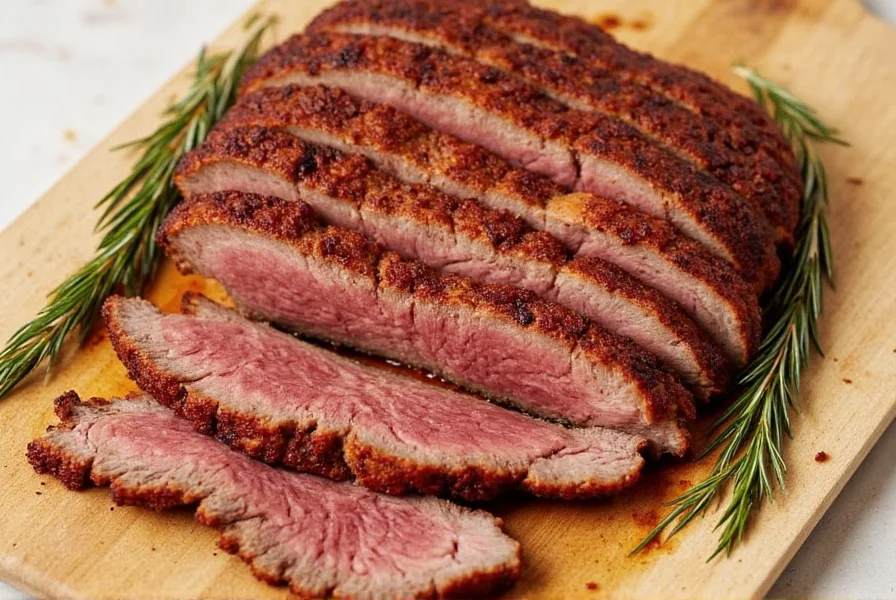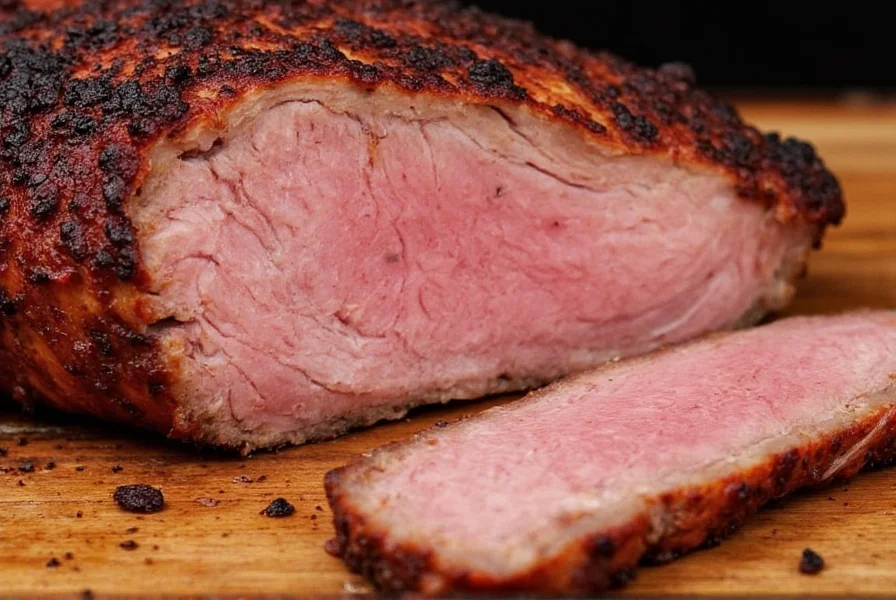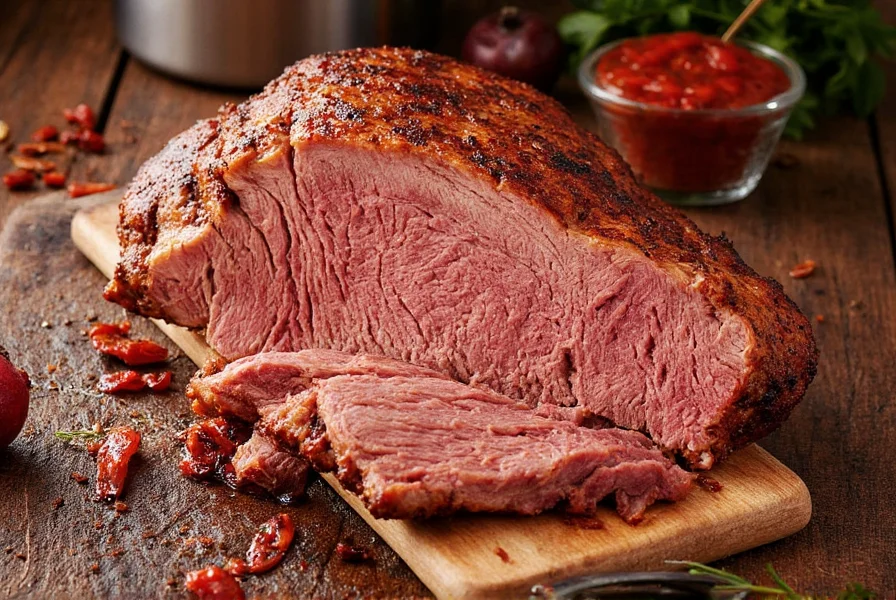Table of Contents
Ingredients
For a tender, flavorful oven brisket, you'll need:
- 1 (10-12 lb) whole beef brisket with thick fat cap
- 2 tbsp kosher salt
- 1 tbsp black pepper
- 1 tbsp garlic powder
- 1 tbsp paprika
- 1 tsp cumin
- 1 tsp dried oregano
- 1 cup beef broth
| Spice | Amount | Role |
|---|---|---|
| Black Pepper | 1 tbsp | Sharp, earthy flavor base |
| Cumin | 1 tsp | Warm, nutty depth |
| Paprika | 1 tbsp | Smoky sweetness and color |
| Garlic Powder | 1 tbsp | Savory umami foundation |
| Oregano | 1 tsp | Herbal balance |
| Salt | 2 tbsp | Essential flavor enhancer |

Step-by-Step Instructions
- Prepare the brisket: Pat the brisket dry with paper towels. Apply spice rub evenly on all sides, pressing gently to adhere. Refrigerate uncovered for 1-2 hours (or overnight for deeper flavor).
- Preheat oven: Set oven to 300°F (150°C).
- Place in pan: Position brisket fat-side up in a roasting pan or Dutch oven. Pour beef broth around the brisket (not over it).
- Cover and cook: Tightly cover pan with foil. Bake for 3-4 hours until internal temperature reaches 165°F (74°C).
- Uncover and finish: Remove foil. Continue baking uncovered for 1-2 hours, basting with pan juices every 30 minutes, until internal temperature reaches 195°F (90°C).
- Rest: Transfer brisket to a cutting board. Tent loosely with foil and rest for 30-45 minutes before slicing.

Essential Cooking Tips
- Brisket selection: Choose a whole packer brisket (includes flat and point cuts) with a 1/4-inch fat cap for optimal moisture. Avoid pre-trimmed cuts.
- Temperature is key: Always use a meat thermometer. The brisket is done when it reaches 195°F (90°C) and probes like soft butter.
- Slicing technique: Always cut against the grain. Identify muscle fiber direction and slice perpendicular for maximum tenderness.
- Moisture control: If pan juices dry out during cooking, add 1/4 cup hot water to prevent burning.
- Make ahead: Cooked brisket tastes better the next day. Store in refrigerated cooking juices and reheat gently at 275°F (135°C).
Frequently Asked Questions
How long does it take to cook brisket in the oven?
Cooking time depends on size, but generally 4-6 hours total at 300°F (150°C). The critical factor is internal temperature reaching 195°F (90°C), not time alone. Larger briskets (over 12 lbs) may require up to 8 hours.
Should I cook brisket fat side up or down?
Always cook fat side up. As the fat renders, it naturally bastes the meat and protects it from drying out. Cooking fat side down causes the fat to drip away, leaving the meat exposed to direct heat.
Why is my oven brisket tough?
Toughness usually means insufficient cooking time. Brisket contains collagen that must break down into gelatin at 195°F (90°C). If it's still tough, return to oven until probe-tender. Never rush the process.
Do I need to marinate brisket before cooking?
Marinating isn't required, but dry-brining (salting 12-24 hours ahead) significantly improves flavor penetration. For best results, apply salt and spices, then refrigerate uncovered overnight.
Can I cook brisket without a thermometer?
Not recommended. Without precise temperature monitoring, you risk undercooking (tough) or overcooking (dry). The brisket should feel like soft butter when probed with a thermometer.
How should I slice brisket for the best results?
Always slice against the grain. Look for the direction of muscle fibers and cut perpendicular to them. This shortens fibers for tender bites. Use a sharp carving knife and slice 1/4-inch thick for optimal texture.
Can I make oven brisket ahead of time?
Yes! Brisket improves overnight. Cook, rest, then refrigerate in its cooking juices. Reheat gently at 275°F (135°C) covered with foil until warmed through. This allows flavors to meld and collagen to fully break down.











 浙公网安备
33010002000092号
浙公网安备
33010002000092号 浙B2-20120091-4
浙B2-20120091-4